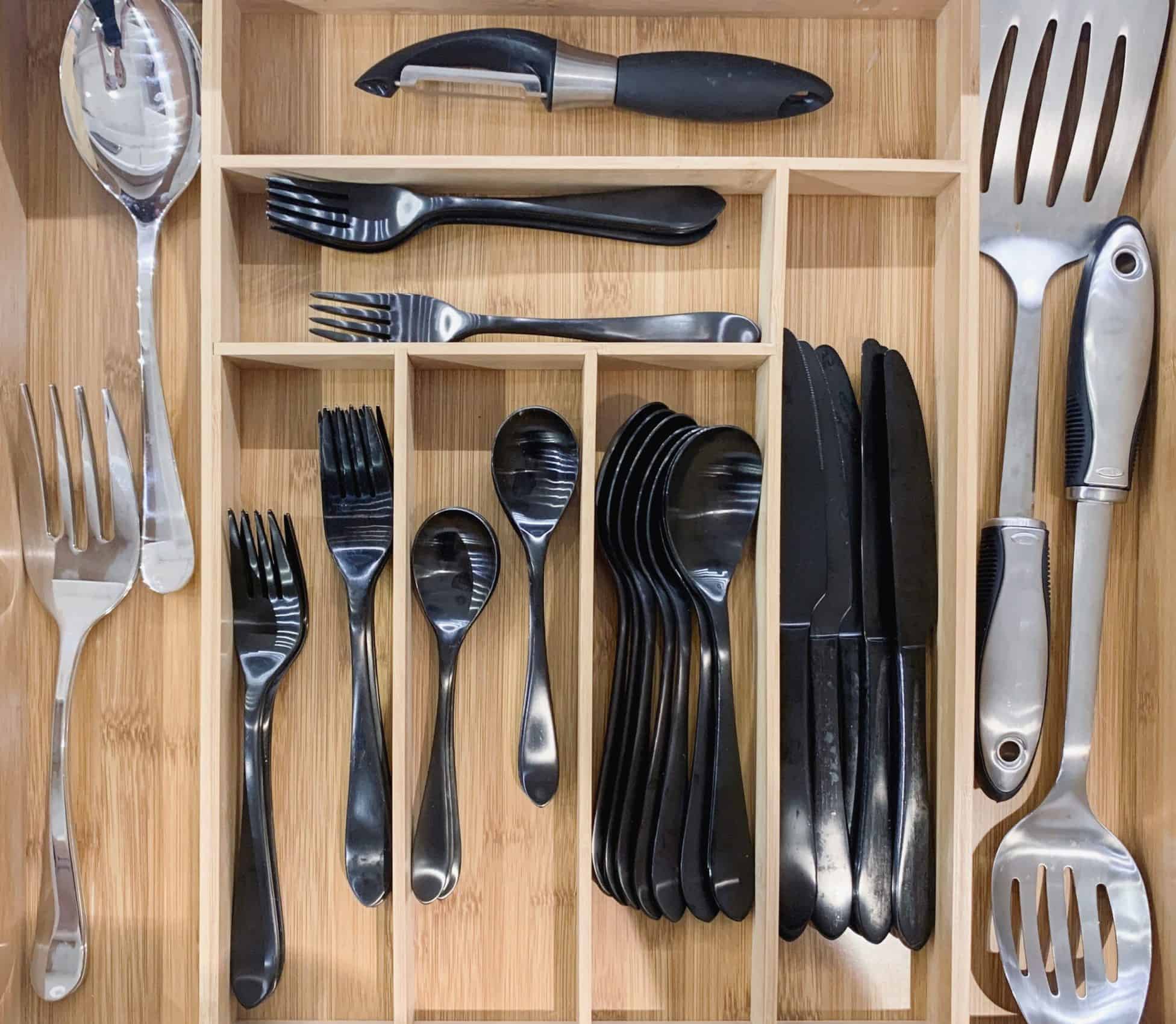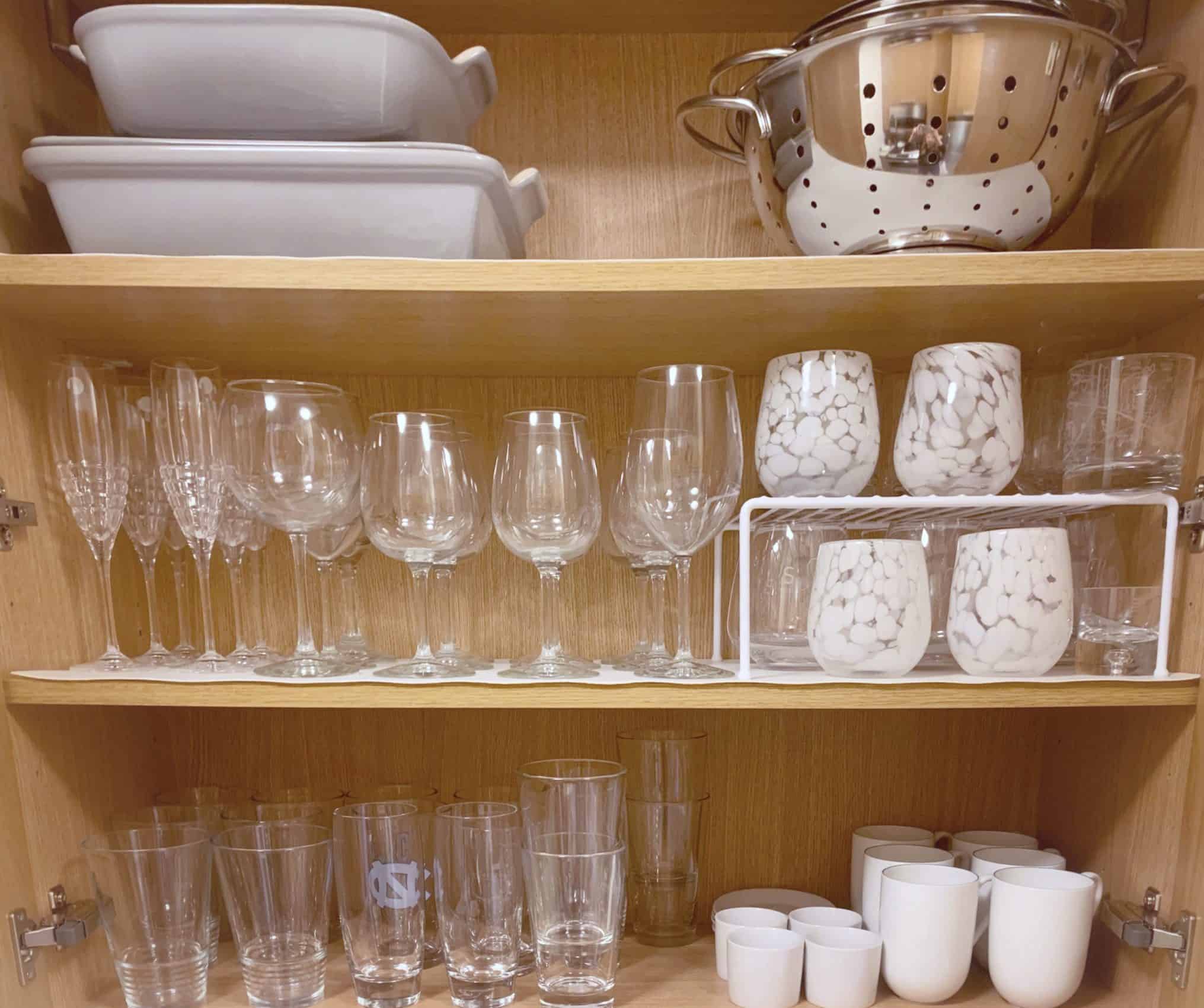There are two types of people: those who wallow in isolation and those who DO in isolation. No judgement! If what you need or all you can handle right now is to sit in front of the TV and snack, that’s totally fine. There is no moral imperative that requires you to “make the most” out of this time. If you are staying home and really isolating (“only” going to see your immediate family does not count, by the way), then you are doing what you’re supposed to do.
That said, if you want to be productive, we’ve partnered with Done Neatly — a professional home organization service with offices in New York, Boston, Soutern California, and South Florida — to come up with 10 easy projects that are perfect for bringing a much-needed sense of order and accomplishment into these dark, lonely, stuck-at-home-mucking-about-in-my-own-filth days.
Take on one of these little projects every day and see how it transforms not only your home, but also your overall sense of wellbeing.
Now, before we get started, a little note about process: the MOST important thing to remember when starting a big project like organizing your home is to start small! Starting small means you are more likely to finish, which will give you a sense of satisfaction and pride, which will help motivate you to do the next thing. Also, any big project is really just a collection of smaller projects, so, if at any time, you start to feel overwhelmed by the enormity of what you’re doing, take a step back, breathe, and think about how you can break up what you’re doing into smaller, more manageable pieces.
1. Medicine Cabinet
- Remove all the items from your cabinet
- Clean every shelf
- Sort all your items into categories — creams, cleansers, tools, pills, etc.
- Check expiration dates
- Get rid of anything you don’t ACTUALLY use or love
- Load what’s left back into the cabinet, keeping daily-use items front and center and moving less commonly used items to another area (ie: under the sink or an “extras” bin)
2. Under the Bathroom Sink
If you’re a couple, Done Neatly recommends that you split this area in half, side by side. It’s only fair. If that means one person has to get rid of more stuff than the other person, so be it.
- Remove all of the items
- Clean surfaces
- Sort all your items into categories
- Check expiration dates
- Get rid of anything you don’t ACTUALLY use or love
- Take anything you plan to keep out of its original box
- Find storage solutions (like boxes, shelves, or dividers) that are sized to fit the items in each of your categories. Grouping by category will help you stay organized longer and makes it easier to find things when you need them. If you don’t have the organization supplies you need, don’t fret! You can order what you need online and use small bags and shoeboxes in the meantime.
- Load everything you are keeping back under the sink
- PRO TIP: maximize your vertical space! Done Neatly likes anything stackable — particularly stackable drawers and bins made by The Home Edit and iDesign partnership. To maximize your space even more, don’t forget about the doors! Utilize either an over-the-cabinet door organizer or an acrylic container that securely sticks to the door!
3. Cutlery and Utensil
Utilize a drawer organizer to keep the different categories of cutlery separate. There are an array of options out there to suit the size of your drawer, your aesthetic, and budget.
For the additional utensils you have, challenge yourself to do the following:
- Remove all of your items
- Clean your drawers
- Review the inventory you have and edit to only keep those items you use (no, you do not need more than one set of measuring spoons!)
- Group your items by size and/or category, and contain by using drawer organizers made appropriately to fit the size and quantity of each category. If you need to order additional drawer organizers, keep items organized in the meantime with rubber bands plastic bags.
4. Pantry
This is one of Done Neatly‘s favorite areas to organize. It is also one of the most subjective areas to organize with regard to aesthetics. And guess what, the term “pantry,” doesn’t always mean that it’s a walk-in space. This is simply about organizing your pantry items — your pastas, grains, chips, canned goods, etc.
- Remove all of the items
- Clean surfaces
- Review your inventory and remove anything that is expired and that you do not and will not consume
- Consider if this is the average amount of and type of content
- Contain like-items within bins and label
- PRO TIP: Done Neatly loves the labels made by the partnership between iDesign and The Home Edit, which are sold at The Container Store, but a good ol’ label maker works just fine too! If your space is limited, do not force yourself to container like-items in bins, simply utilize your labels and stick them on the sides of the cabinet so your items have a dedicated home (and so your partner can’t say they don’t know where something goes).
5. Refrigerator
- Remove all of the items (are you noticing a pattern here?)
- Clean surfaces
- Review your inventory and remove anything that is expired or spoiled
- Consider if this is the average/normal amount and type of content
- Measure your shelves and gather the appropriate containers. This step is optional, depending on your lifestyle, space, and budget, however Done Neatly loves any refrigerator bin made by iDesign.
- Keep in mind that different foods require different temperatures in order for optimal consumption and lifespan, so placement should be implemented accordingly! (Here’s a handy little guide for what to store where in your fridge to maximize freshness.)
6. Spices
If your kitchen has a built-in spice cabinet, you’re one of the lucky ones! Otherwise, you can utilize turntables and tiered cabinet organizers to maximize the space in your cabinet!
- Remove all of your spices
- Check for expiration dates and remove anything that you do not use or is out of date
- This step is optional, however from both a productivity and aesthetic standpoint, decant your spices into matching jars! Make sure to write the expiration date on the bottom of the jar!
- Placement: keep your most commonly-used spices toward the front. Alternately, if you are like me and have literally dozens of spice containers, organizing them alphabetically can make them much easier to keep track of.
7. Kitchen Cabinets
Time to maximize your space! This includes all your plates, glasses, mugs, etc. Keep in mind that most shelves are adjustable, allowing you to customize your space to suit your needs!
- Remove all of the items
- Clean surfaces
- Categorize and keep like-items together
- Maximize your space by utilizing cabinet shelves! Done Neatly’s favorites are from The Container Store and are made of either chrome or vinyl-lined.
- Keep your most-commonly used items low, within arms reach
8. Under the Bed
According to feng shui, you shouldn’t use this area for storage, and rather allow the air to flow freely throughout the bedroom. While Done Neatly agrees that this is ideal, sometimes you just really need that space! The important thing is not to forget what you’ve got stored under there.
- Remove all of the items
- Vaccuum away all the dust
- Get rid of anything you don’t actually need (a good rule of thumb is that if you forgot it was down there, you probably don’t need it)
- Utilize large storage containers designed specifically for under-bed storage and dividers to keep like-items together. Don’t store unbinned items under your bed, if you can help it. Large storage containers keep dust off your stuff and allow you to take everything out, clean under the bed, and then put everything back with maximum efficiency, something Done Neatly recommends you do every three months to keep dust bunnies at bay.
9. Seasonal Closet Transition
Tackling the organization and clean-up of the space under your bed is a nice segway into the topic of seasonal transition with regard to clothing, since this is where many of us store our out-of-season pieces. If you haven’t done this already, the time is now.
- Do a once-over of your winter items. Due to seasonality, wait until the start of FW20 to donate/consign/sell these items. Utilize and label either Ziploc vacuum-sealable bags or plastic bins to store your items. Always remember, keep like-items together!
- Review and edit your spring/summer items! Hold yourself accountable to ensure you keep only what you love! Now is the time to donate, consign, or sell your unused warm-weather items. Well, not NOW now, but once the Coronavirus crisis is over.
- Take inventory of what remains to see what you feel you still need to incorporate into your wardrobe.
- Hang your clothe by category and color. If you have a large assortment of tops, take it one step further and organizing by sleeve length.
- Use you best judgement to determine if your knitwear should be hung or folded. While some pieces can be hung, if it slouches at the shoulder, fold that baby up! If you are going to hang your knits, felted hangers will help prevent sagging.
10. Dresser
- Remove all your items
- Clean your drawers
- Categorize your items and review your inventory
- Edit and keep only what you love and actually wear
- Utilize linen, bamboo, or plastic drawer organizers, which are easily sourced online, to keep your items contained
- File fold what you can, especially your t-shirts. Denim is also good for file-folding, unless you prefer it to be hung or folded on a shelf.
PRO TIP: Keep your undergarments and socks toward the top of your dresser and work your way down, organizing your items by weight — tops and workout clothes in the middle, bottoms on the bottom.
Subscribe to our newsletter and follow us on Facebook and Instagram to stay up to date on all the latest fashion news and juicy industry gossip.










